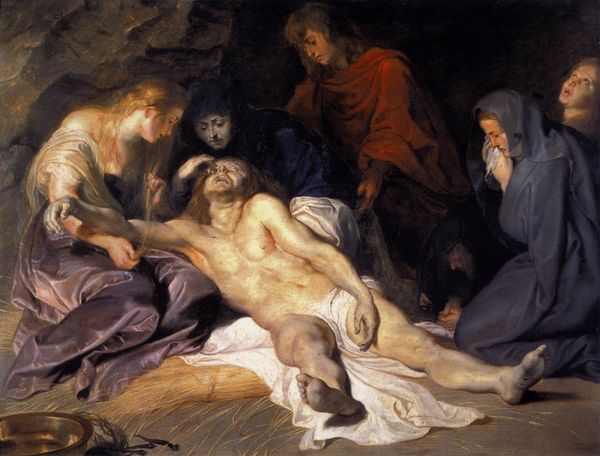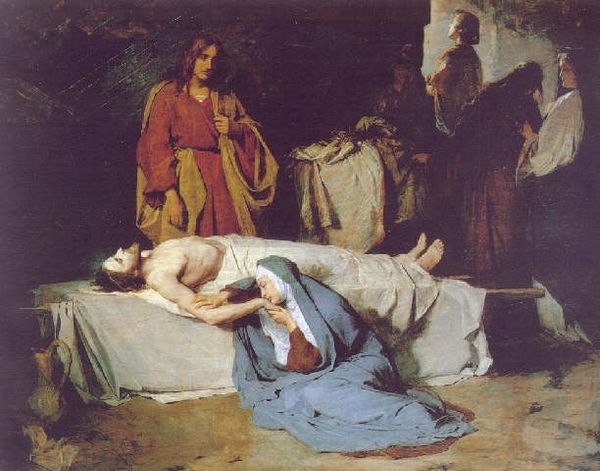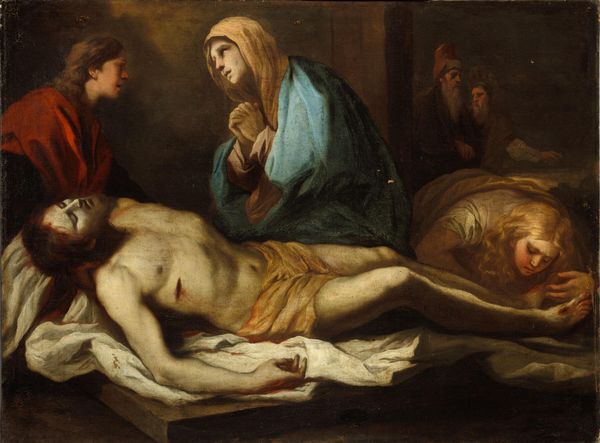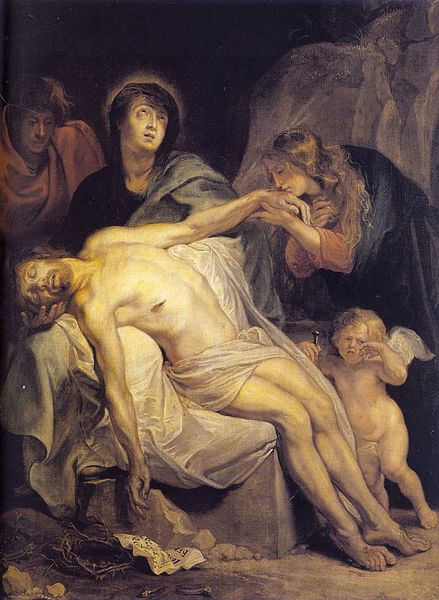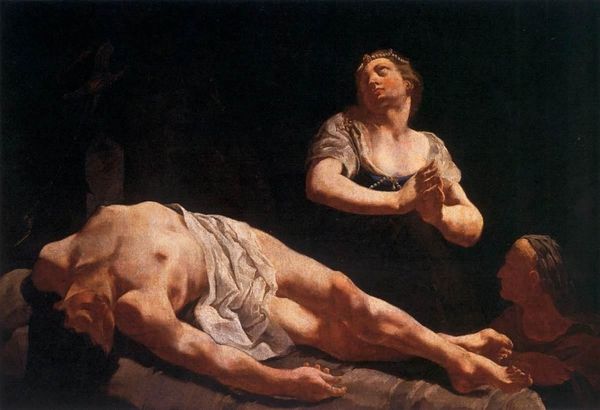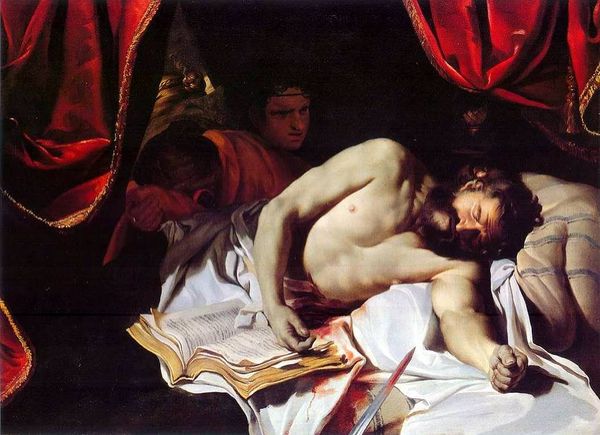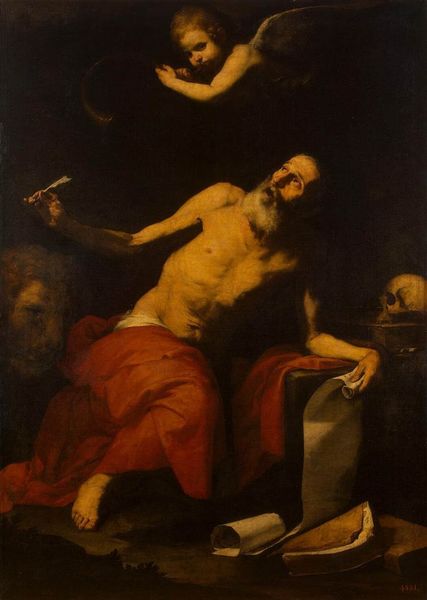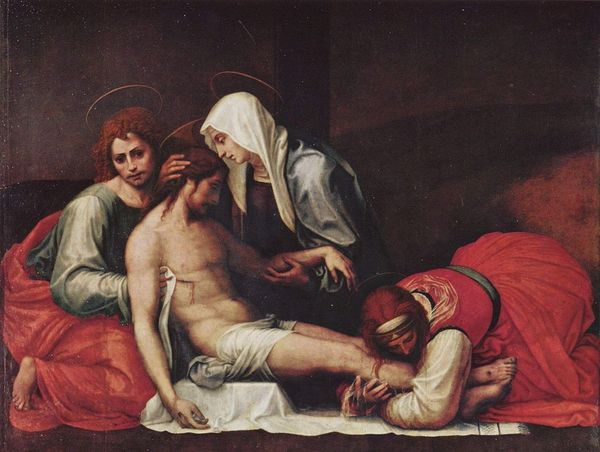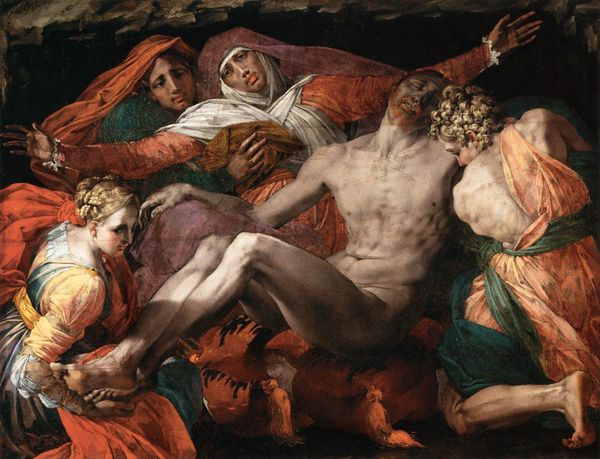
oil-paint
#
allegory
#
baroque
#
oil-paint
#
roman-mythology
#
underpainting
#
mythology
#
genre-painting
#
italian-renaissance
#
nude
#
erotic-art
Dimensions: 101 x 136 cm
Copyright: Public domain
Editor: Here we have "Venus inebriated by a Satyr," an oil painting by Annibale Carracci. There's a reclining nude figure, presumably Venus, looking rather passed out, with a satyr and a child in the background. I find the depiction of Venus somewhat...vulnerable, maybe even objectified, and it makes me a little uneasy. How should we interpret a work like this? Curator: That sense of unease is valid and points directly to the socio-political function of these paintings in Carracci's time. Nudity was very often a coded signal of status, virtue and even luxury depending on who was doing the painting and who the work was commissioned by. This depiction relies heavily on the male gaze for the ownership class, a gaze reinforced by both the satyr's posture and the artistic style being baroque. How might its Italian Renaissance connections have influenced contemporary viewers of this work? Editor: So, this work isn't *just* a mythological scene or some simple visual enjoyment. The satyr, who isn't bothered that she's inebriated, together with her being unconscious speaks to that power dynamic between genders... And how might museums play into either contesting, or preserving that historical social ordering? Curator: Precisely. The role of the museum is central, acting both as a legitimizing structure through display and a platform that, at its best, inspires social critique by highlighting those inherent power imbalances. Consider too, how the "erotic art" label could both sensationalize the art as well as reveal gender inequality during the Baroque period. Editor: Wow, that really reframes how I see the painting! It's not just an aesthetic object; it's a historical artifact reflecting specific societal norms. Curator: Exactly. Analyzing the social history, and acknowledging art’s public role, is crucial for a deeper appreciation and critical assessment. We can ask tough questions about these pieces. It provides context we otherwise overlook.
Comments
No comments
Be the first to comment and join the conversation on the ultimate creative platform.
